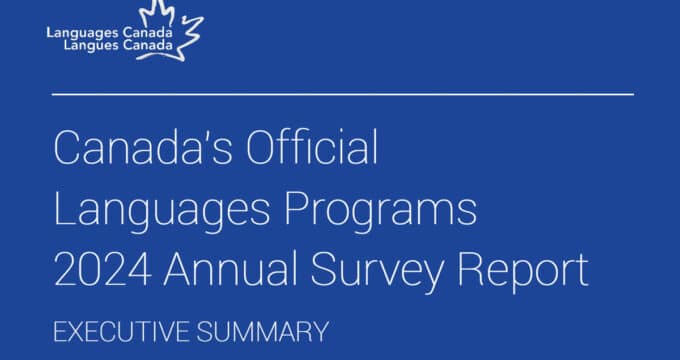Direct spending by international students in France tops €4.65 billion
France welcomed 295,084 foreign students in 2013/14 for an increase of 3.5% over the reported 2010/11 enrolment of 284,945. The country has established an ambitious goal to double its international student numbers by 2025. And while it is too early to measure the effect of new policy measures introduced earlier this year - particularly an easing of post-study work restrictions - it seems clear that France will have to see an increase in recent year-over-year growth rates if it is to meet its longer-term targets. In the meantime, a new economic impact study, the first of its kind, by market research firm BVA estimates total spending by foreign students in France was €4.65 billion (US$5.76 billion) in 2013/14. The study, Au-delà de l’influence: l’apport économique des étudiants étrangers en France, was commissioned earlier this year by Campus France, the agency responsible for promoting France as a study destination, and it compiles analysis by BVA with the results of an online survey of 4,200 international students currently enrolled in France. The study claims that France is the third most-popular study destination (and the leading non-English-speaking destination in the world) based on its 2013/14 enrolment. Project Atlas data from the Institute of International Education, however, suggests that France is the fourth-ranked destination after the US, UK, and China.
Where they come from
BVA notes that France currently welcomes students from 190 countries but mainly from a smaller group of 54 nations, each of which sends more than 1,000 students annually. In terms of global distribution, 43% of the country’s foreign students come from Africa, 26% from Europe, 19% from Asia, 8% from the Americas, and 4% from the Middle East. The average term of study for foreign students in France is 26 months, spread over one or more stays in the country. Perhaps not surprisingly, enrolment is concentrated (28%) in and around the universities and dazzling sights of Paris. The southeast of the country - a region that includes university towns such as Grenoble (voted the best place to be a student in France last year) - is close behind at 26%. The eastern, southwestern, and western regions of the country each host between 13% and 19% of the country’s foreign students. Three of every four international students in France are enrolled at French universities, and half of those are engaged in postgraduate or doctoral studies.
Spending in France
BVA estimates that foreign students spend an average of €11,048 (US$13,674) per year, excluding tuition. While spending naturally varies widely from student to student, this average estimated spend includes such items as housing, meals and daily living expenses, entertainment, transportation, communications, and insurance. Based on current enrolment, total spending on non-tuition living expenses by foreign students in France was estimated at €3.25 billion (US$4.02 billion) for 2013/14. A majority of respondents to the BVA survey expressed concerns regarding the cost of living in France, with 55% indicating the costs are difficult to bear and 18% characterising them as “very difficult.” Seven out of ten respondents, however, also indicated that, even with the financial sacrifices needed to undertake their studies in France, the experience was well worth the investment. BVA describes overall spending by international students as follows:
- €3.25 billion in daily living expenses (as noted above);
- €563 million in tuition and other school fees;
- €466 million in travel expenses for visiting family and friends;
- €364 million in airfares to and from France.
This amounted to a total estimated direct spending of €4.65 billion (US$5.76 billion) in 2013/14.
Measuring economic impact
The BVA study looks at economic impact from a couple of different points of view. It first makes some broad estimates regarding the public cost of hosting international students, and then explores some of the indirect or longer-term impacts for France. BVA estimates the tuition subsidy provided by the French government for foreign students could be as high as of €2.84 billion (US$3.51 billion). This, in combination with roughly €55 million in direct government scholarships, leads it to conclude that the “total cost” of hosting France’s nearly 300,000 foreign students is just under €3 billion. The report’s authors acknowledge, however, that this estimate is based on a simple calculation reflecting the proportion of international students against total state spending on higher education. As such, it likely overstates the real cost, that is the marginal cost, of hosting international students in facilities and programmes for which the French government would be financially responsible for in any case. This means in turn that the report’s estimate of €1.7 billion (US$2.1 billion) in direct, net economic benefit to France has to be read as highly conservative as well. Beyond this, BVA points to a number of additional impacts beyond direct inflows and outflows of funds, many of which are equally challenging to measure with precision but are nonetheless important to our overall understanding of the impact of international education in France.
- 41% of international students work during their stay, and contribute to public health and pension funds as a result (while rarely benefiting from those programmes themselves);
- 85% of survey respondents indicated their intention to return to France for tourism in the future;
- Seven out of ten indicated their study experience would have a positive impact on their desire to buy French products in the future, and nearly 80% said it would increase their interest in working with French companies.
The study also found that the experience of studying in France greatly improved foreign students’ perception of the country. Overall, nine out of ten respondents would recommend France as a place to live, visit, or study. This leads the report’s authors to characterise international students as, “excellent ambassadors… who are prepared to promote France in all fields.” The report concludes its findings by noting, “The admission of foreign students is a long-term investment, with a high return in many sectors of the economy. This view, widely shared by actors in international mobility throughout the world, is validated by the survey… The study verifies the students’ attachment to France is sustainable beyond the period of study… These students are part of the economy and community life they help animate. They are a window on the world for the French citizens with which they rub shoulders, and they are surely a promising investment and very profitable for France.”


















